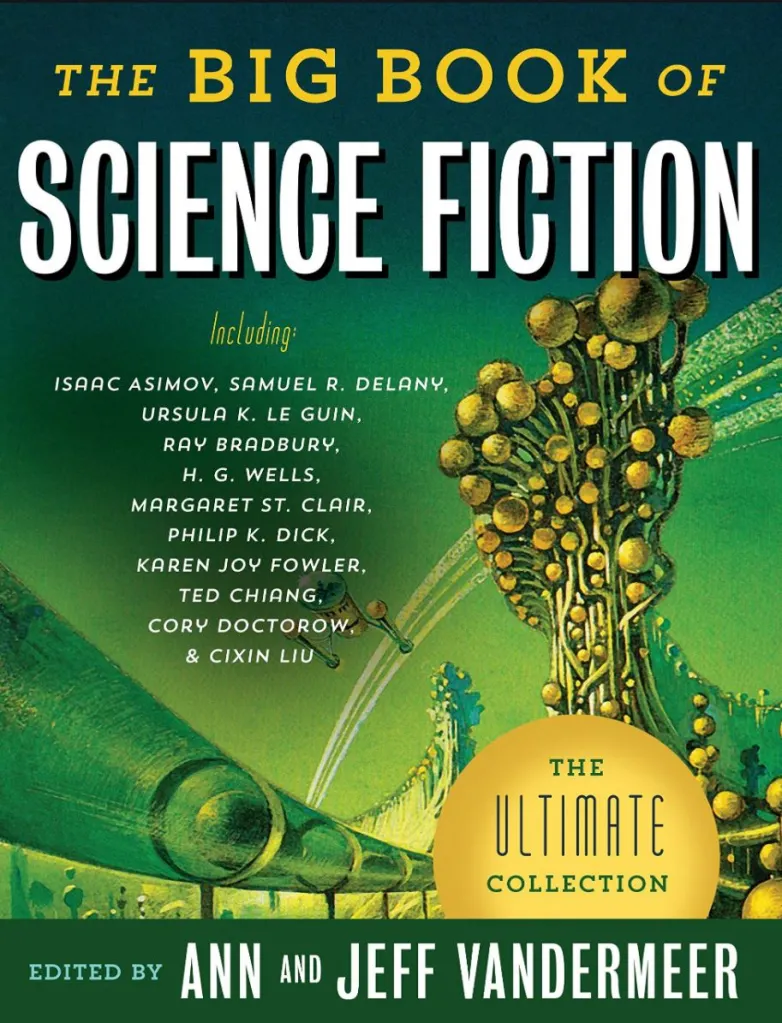
Group Read 27: The Big Book of Science Fiction
Story #57 of 107: “Good News from the Vatican” by Robert Silverberg
“Good News from the Vatican” by Robert Silverberg first appeared in Universe 1 edited by Terry Carr in 1971. The Universe series was the next big original anthology series after Damon Knights Orbit if I remember right. Original anthologies were just becoming a thing, and it seemed stories published in them were of a higher order than those that first appeared in the magazines. “Good News from the Vatican” also won the Nebula award for the best short story the following year. Oddly, Carr didn’t include it in his new best-of-the-year anthologies, Best Science Fiction of the Year, nor did Wollheim for The 1972 Annual World’s Best SF, but Lester del Rey did include it in his new best-of-the-year anthology series, Best Science Fiction Stories of the Year. 1972 was a big year for best-of-the-year volumes, and our Facebook group has read two of them.
This is a long roundabout way of wondering if “Good News from the Vatican” was the best SF short story from 1971. Why do we remember the stories we do? We just read another one, “Vaster Than Empires and More Slow” by Ursula K. Le Guin. And 1971 was famous for Larry Niven’s “In Constant Moon.” Don’t get me wrong, I like “Good News from the Vatican.” Silverberg is a skilled writer with worldly experience and a lot of acquired knowledge and it shows in the story. “Good News from the Vatican” is just as literary as something Graham Greene would have written at the time.
The VanderMeers picked two stories from 1971 to remember. I liked both choices, but they were not the stories I recall for remembering 1971 science fiction. I think of “Inconstant Moon” and “A Meeting with Medusa” by Arthur C. Clarke. I’m not disagreeing with the VanderMeers’ choices. And I’m not even considering that different people have different tastes in stories.
No, I want to explore the idea that there are different flavors of science fiction. And there might be fans that strongly prefer one over the other. I’m not sure what to call these flavors, but I believe I see two in the stories from 1971.
To “Good News from the Vatican” I’d group “No Direction Home” by Norman Spinrad and “All the Last Wars at Once” by George Alec Effinger, and probably “Gehenna” by Barry Malzberg and “How Can We Sink When We Can Fly?” by Alexei Panshin.
To “Inconstant Moon” and “A Meeting With Medusa” I would add “The Queen of Air and Darkness” by Poul Anderson. Now you might guess I would add “Vaster Than Empires and More Slow” but I’m not sure. It is a story involving outer space but it’s not quite the same, it’s more like the other group. Why?
If you’re familiar with the history of science fiction in 1971 you might say I’ve divided the stories up into New Wave and Old Wave. And that might be true, but I think my unconscious mind is getting at something else.
The first type allows the author to be clever, intellectual, opinionated, and philosophical. The plot or story takes a back seat, allowing the writer to become a commentator. The other type takes the reader on an adventure, giving them a virtual experience.
“Good News from the Vatican,” asks the reader: What would ordinary people, and religious professionals think about a robot being a spiritual leader? “Inconstant Moon,” asks the reader what they would do if they knew the world was about to end?
I don’t know if I’m conveying the insight I’m having, but it’s working for me. I’m zeroing in on why I like different stories and why.
James Wallace Harris, 12/10/21
